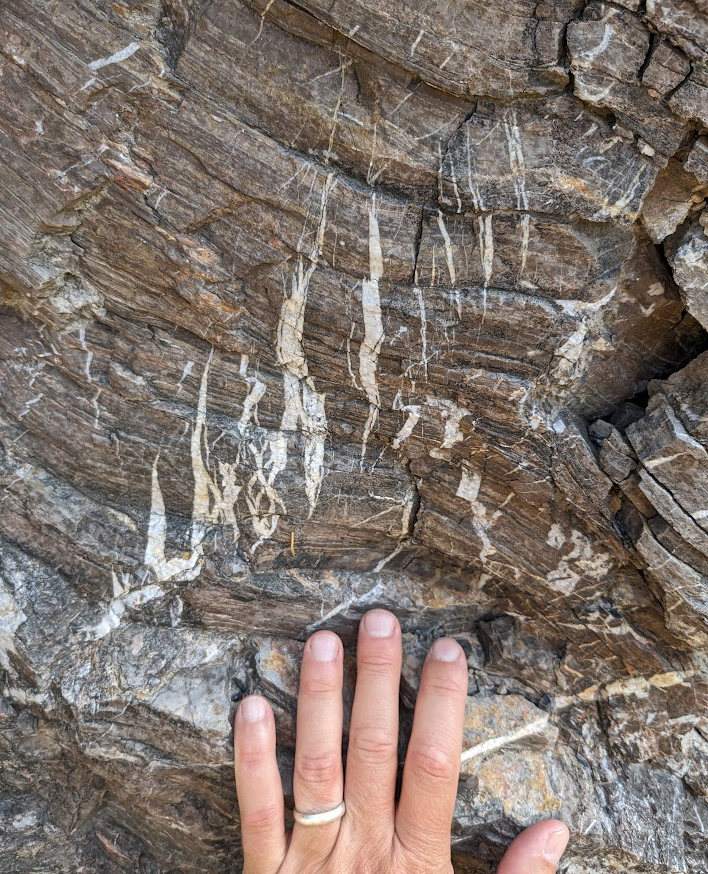12 June 2023
Tension gashes in the Tonoloway Formation
Posted by Callan Bentley
I spent yesterday on Corridor H in eastern West Virginia’s Valley & Ridge province. The rocks here are a mid- to upper-Paleozoic set of strata that record the switch from post-Taconian passive margin sedimentation into Acadian clastic deposition, and then everything is deformed by Alleghanian folding and thrusting. I found myself taking photographs of the same old outcrops I know and love there – but here’s something new that I don’t think I’ve reported previously: a lovely set of tension gashes disrupting well laminated dolostones of the (Silurian-aged) Tonoloway Formation.

It’s a decent en echelon array of these short extensional veins, but then bedding-perpendicular compression resulted in the development of stylolites that cut across the veins, and make them appear “offset” in places – but not due to bedding-parallel slip, merely dissolution of material that once used to connect as-yet-undissolved sections of vein.


 Callan Bentley is Associate Professor of Geology at Piedmont Virginia Community College in Charlottesville, Virginia. He is a Fellow of the Geological Society of America. For his work on this blog, the National Association of Geoscience Teachers recognized him with the James Shea Award. He has also won the Outstanding Faculty Award from the State Council on Higher Education in Virginia, and the Biggs Award for Excellence in Geoscience Teaching from the Geoscience Education Division of the Geological Society of America. In previous years, Callan served as a contributing editor at EARTH magazine, President of the Geological Society of Washington and President the Geo2YC division of NAGT.
Callan Bentley is Associate Professor of Geology at Piedmont Virginia Community College in Charlottesville, Virginia. He is a Fellow of the Geological Society of America. For his work on this blog, the National Association of Geoscience Teachers recognized him with the James Shea Award. He has also won the Outstanding Faculty Award from the State Council on Higher Education in Virginia, and the Biggs Award for Excellence in Geoscience Teaching from the Geoscience Education Division of the Geological Society of America. In previous years, Callan served as a contributing editor at EARTH magazine, President of the Geological Society of Washington and President the Geo2YC division of NAGT.
Very cool!! It looks, to me, like the stylolites and tension gashes formed during the same compressional episode, with, perhaps, a very slight counterclockwise rotation of the bedding between formation of the gash veins and development of the stylolites? I wonder which way is “up” and whether the beds wrap around (is this exposure part of a recumbent fold?).
I reckon that’s a possibility too!
Up is “up” here – Though there is meso-scale folding within this large roadcut, nothing is recumbent. The folds’ axial surfaces are for the most part vertical or close to it. Here’s an example.